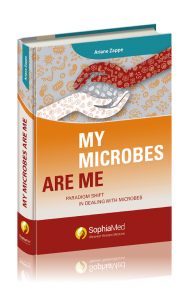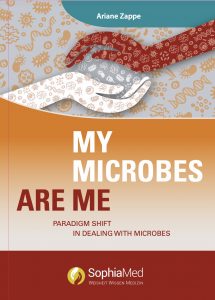What do you think about microbes? Here are some findings from medi- cal, scientific and published studies that have greatly changed my way of thinking. Which of the two alternatives fits your world view?
1) Lactic acid bacteria, for example streptococci, migrate into a fibroblast, a human cell that builds up and breaks down our connective tissue, thus becoming so-called intracellular pathogens. What do you think will happen?
a) In this way, the pathogens have protected themselves from the immune system, can no longer be reached by antibiotics and damage the cell from the inside.
b) The fibroblast then transforms into a stem cell, perhaps our most valuable cell, which can further develop into numerous other tissue cells and thus regenerate our body.
2) Mice are treated to develop autoimmune encephalitis, which is very similar to our multiple sclerosis. What happens if the mice are also infected with the dreaded „hospital germ“ Staphylococcus aureus?
a) The mice with Staphylococcus aureus develop a superinfection that intensifies the symptoms of multiple sclerosis, accelerates the course of the disease and leads to neurological symptoms as well as severe inflammation of the respiratory tract.
b) Mice with Staphylococcus aureus are protected from inflammation in the brain, do not develop any neurological symptoms and remain healthy.
3) Aspergillus flavus is a mould fungus, which is frequently found in apartments, but also in food. It emits dangerous toxins, including aflatoxins. A so-called aspergillosis in the lungs can be fatal just because of these toxins. What happens if streptococci are added to a culture of Aspergillus flavus?
a) Both the moulds and the streptococci multiply rapidly, making the mould more aggressive and releasing signifcantly more toxins.
b) In the presence of streptococci, Aspergillus flavus no longer releases toxins and behaves quietly without dying off itself.
4) The breast tissue of women with and without breast cancer is examined and lactic acid bacteria including streptococci are found in the breast tissue. Which group contains more microbes in breast tissue?
a) Women with breast cancer.
b) Women without breast cancer.
5) A mouse with pancreatic cancer, a very serious diagnosis for us humans, will be injected live streptococci (Streptococcus pyogenes), bacteria that can cause tonsillitis and scarlet fever, once into the can- cer tumor. What happens?
The cancer gets completely out of control. The already weakened mouse also suffers a severe bacterial infection.
The tumour then dissolves completely. The mouse becomes healthy.
Probably answer a) fits into your world view of „insidious and dangerous“ microbes from which we must protect ourselves. The studies which will be dealt with in this book, however, prove answer b) to every question. If you now read through the questions again with the correct answers b), what are your conclusions?
Do we have to rethink our attitude to microorganisms? Is our world view of infections and disease-causing microbes correct at all?
I have long observed in my practice that a paradigm shift must take place if we are finally able to find solutions for the chronic diseases of our time.



